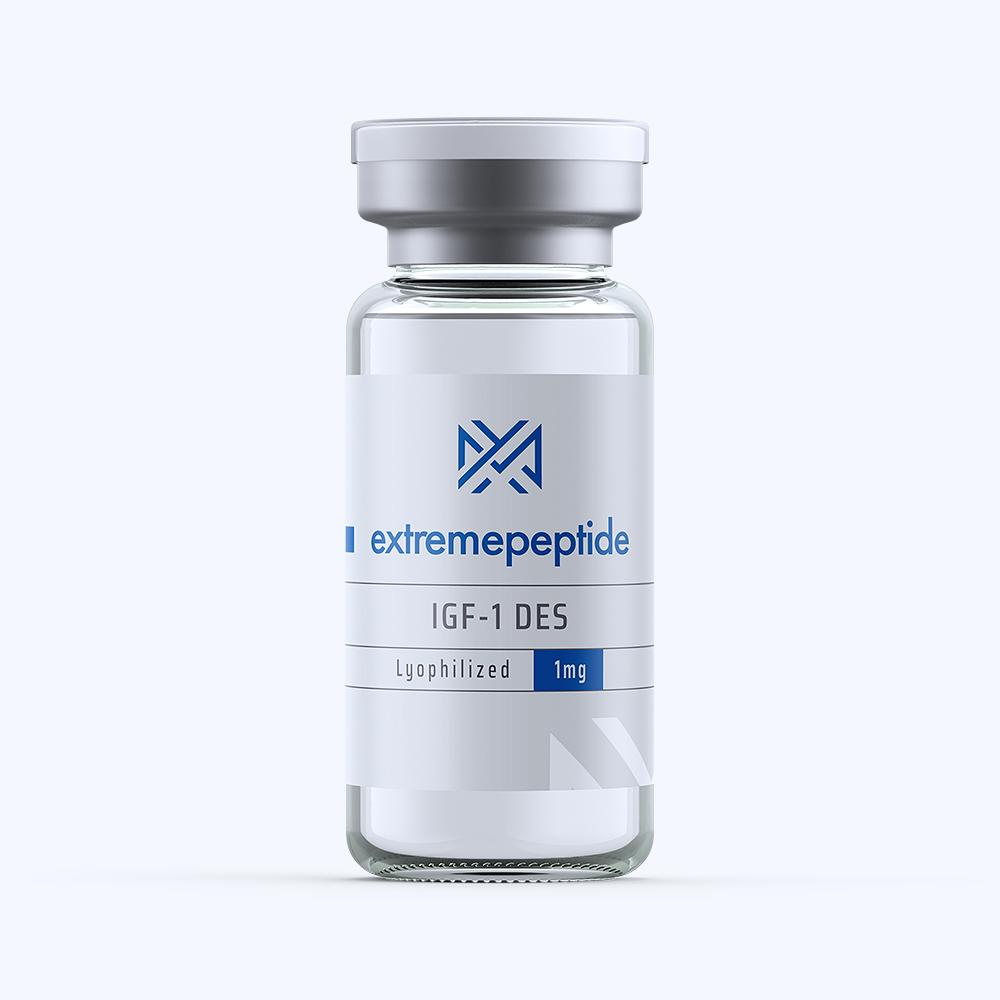IGF-1 DES 1,3 is a polypeptide consisting of 67 amino acids. It can go by the names Somatomedin C, IGF1, IGF-1, IGF1A, or Insulin-like growth factor-1. Its molecular weight is 7371.4.
IGF-1 DES 1,3
Scientific study that has been based on animal test subjects has determined that it can play a key role in the growth and repair of muscle and tissue growth. That being said, these studies have also indicated that its overall functionality is limited in its nature, as it has been shown to have a rapid half-life of around 20 minutes.
IGF-1 DES 1,3 and Hyperplasia
 The primary function regarding IGF-1 DES 1,3 is specifically tied to its inherent ability to create a condition known as either hyperplasia, sometimes known as hypergenesis. This particular process is essentially marked by the regulation of cellular increase or proliferation within an animal test subject. There are a host of triggers that have been linked to the peptide’s functionality through scientific study. The first trigger is a need for stabilization in an area in which cellular proliferation is needed, such as when a base layer of epidermis has to be created in order to compensate for a natural instance of skin loss. The second trigger involves a chronic inflammatory response, which is marked by a need to proliferate cells in order to aid in fighting off inflammation throughout various parts of the body. Another trigger would be due to a need for cell proliferation as a means to ward off various instances ailments that may produce a level of hormonal dysfunction. The process of hyperplasia could also be triggered by the onset of other forms of cellular loss brought about by damage or disease throughout an animal test subject’s body.
The primary function regarding IGF-1 DES 1,3 is specifically tied to its inherent ability to create a condition known as either hyperplasia, sometimes known as hypergenesis. This particular process is essentially marked by the regulation of cellular increase or proliferation within an animal test subject. There are a host of triggers that have been linked to the peptide’s functionality through scientific study. The first trigger is a need for stabilization in an area in which cellular proliferation is needed, such as when a base layer of epidermis has to be created in order to compensate for a natural instance of skin loss. The second trigger involves a chronic inflammatory response, which is marked by a need to proliferate cells in order to aid in fighting off inflammation throughout various parts of the body. Another trigger would be due to a need for cell proliferation as a means to ward off various instances ailments that may produce a level of hormonal dysfunction. The process of hyperplasia could also be triggered by the onset of other forms of cellular loss brought about by damage or disease throughout an animal test subject’s body.
IGF-1 DES 1,3’s ability to initiate the process of hyperplasia has led scientific study based on animal test subjects to determine that the peptide can conceivably play a key role in the regulating the growth of cells and the development of tissue within animal test subjects. Additionally, studies show that IGF-1 DES 1,3 has shown a faculty to influence neuronal structure and functionality throughout the life span of an animal test subject. Furthermore, the studies have indicated that it could play an important part in the overall maintenance of nerve cell function as well as an ability to promote neuroregeneration, also known as nerve tissue growth.
Benefits Derived from IGF-1 DES 1,3’s Function
Scientific study that has been base on animal test subjects has determined that there are a host of possible benefits that can be linked to its mechanics. Some of the more prominent benefits that have been derived include:
- An accelerated rate of muscle repair – Because the mechanics of IGF-1 DES 1,3 allow it to create hyperplasia, scientific study that has been conducted on animal test subjects has determined that it can boost cellular proliferation amongst cells that are required to repair muscular tissue. This in turn can lead to an increase in muscular growth.
- A boosted rate of injury recovery – Scientific study that has been conducted on animal test subjects has determined that IGF-1 DES 1,3’s ability to boost cellular proliferation can cause an elevated amount of cells to be produced in times when an organism suffers from an injury. As such, this measure of cellular proliferation is thought to promote a much faster rate of healing to ensue.
- A slowing down of the aging process – Scientific study conducted on lab rats determined that IGF-1 DES 1,3’s ability to promote cellular production inhibited the natural degradation of muscle fibers that control flexibility and elasticity in the muscles and the skin. This process enabled middle-aged and older rats to exhibit a level of speed and power that were consistent with the speed and power exhibited by younger rats.
Any research and the subsequent results of such research have solely been built on scientific study that has been based on animal test subjects. Because of this, it needs to emphasized that any observations in relation to IGF-1 DES 1,3’s overall functionality or mechanics should be contained to a controlled environment like a medical research facility or a laboratory only.
